
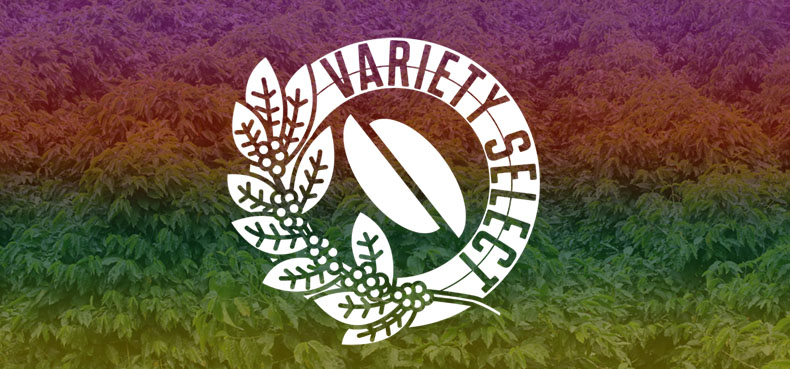
In our usual course of walking around a coffee farm with a producer and talking about his or her coffee; the layout of the farm, the distance between trees, pruning, fertilizing, yield, varieties, life and things like that, we sometimes come across interesting items; like a 75 year old tree in Brazil, a small field of Pacas in Mexico or a family of Possums living on the farm under a tree.
Last Month in Colombia we happened upon a field of Pink Bourbon, yes Pink. We bought all 20 bags.
Later that day we met three small producers in Alto Del Obispo region who all happened to produce Yellow Bourbon. I’ve never seen that much Yellow Bourbon in Colombia, a tree here and there but not enough to produce a hundred bags.
We’ve had producers with pure Castillo that got 91 points on the cupping table, a pure Absynnian varietal from Sumatra and 100% Pacamara from Mexico for example and for these interesting reasons, we have decided to launch a new little program called “Variety Select” In this program we will work with our producer/export partners to keep these varieties separate throughout the picking washing, drying, milling, bagging and shipping process so that we can offer a variety of variety specific coffees from around the world.
Some examples:
Yellow Bourbon – Colombia
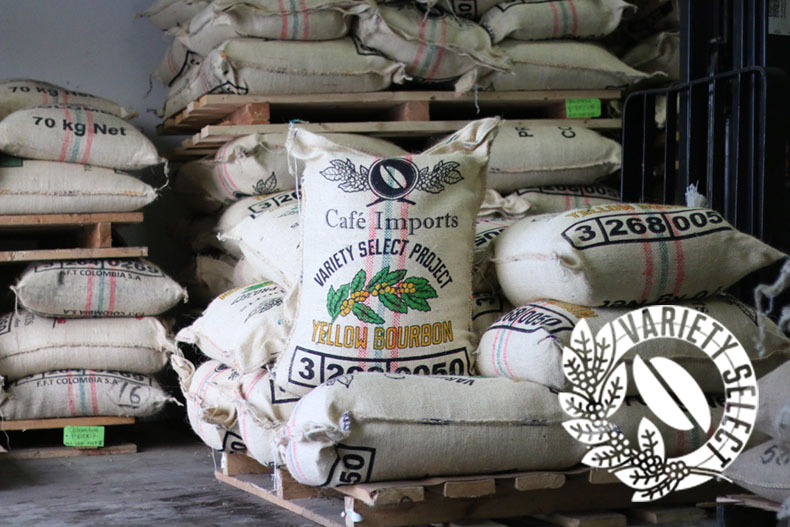 Yellow Bourbon is a natural cross between Red Bourbon and Amarelo de Botacuto, which is labelled as a Typica variant with yellow fruit. Bourbon resulted from selections made by French botanists in wild Yemeni coffee groves. Moved to controlled fields for propagation, the relatively humble stock produced a remarkable variety and was given the namesake of its nursery – Bourbon Island – upon its introduction to South America. Under expanded cultivation in Brazil, a yellow mutant with a unique flavor profile expressed itself and was isolated, expanded, and named for its color.
Yellow Bourbon is a natural cross between Red Bourbon and Amarelo de Botacuto, which is labelled as a Typica variant with yellow fruit. Bourbon resulted from selections made by French botanists in wild Yemeni coffee groves. Moved to controlled fields for propagation, the relatively humble stock produced a remarkable variety and was given the namesake of its nursery – Bourbon Island – upon its introduction to South America. Under expanded cultivation in Brazil, a yellow mutant with a unique flavor profile expressed itself and was isolated, expanded, and named for its color.
Pink Bourbon – Colombia

Cultivated from hybridizations of Red and Yellow Bourbon – very rare but the producer said it is quite resistant to Rust. Pink and Orange Bourbons are very difficult to produce with consistency. The recessive genes leading to the expression of these colors are easily thwarted by the presence of yellow and red genes in a given pollen grain. A carefully isolated and contained lot can do quite well and preserve the unique color and character of this variety, though this is quite hard to find.
Laurina or Bourbon Pointu
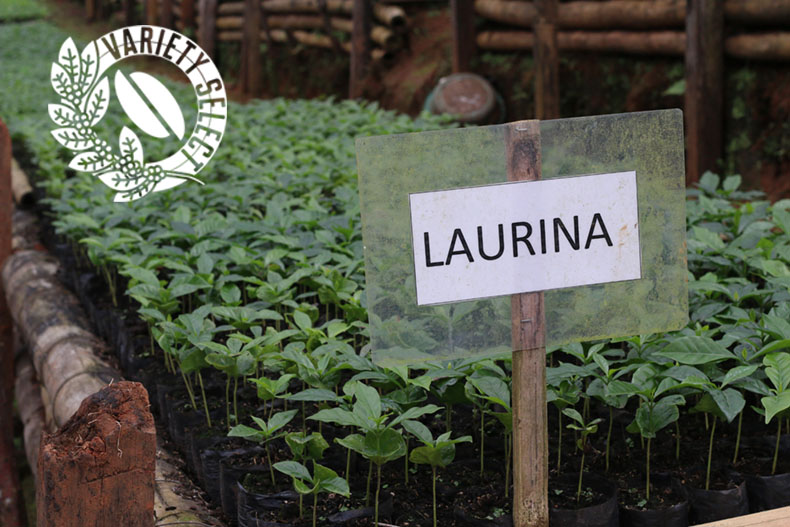
Laurina is a Bourbon derivative originating from Reunion Island with a recessive gene mutation that gives it a dwarf-like habit, small leaves, small, pointed seeds and very low caffeine concentration: as low as 0.6% when compared to the 1.2% of Arabica and 2.2% found in Robusta. The Laurina is also parent to Mokka varieties, known for uniquely small beans and even more exotic flavors.
Rume Sudan
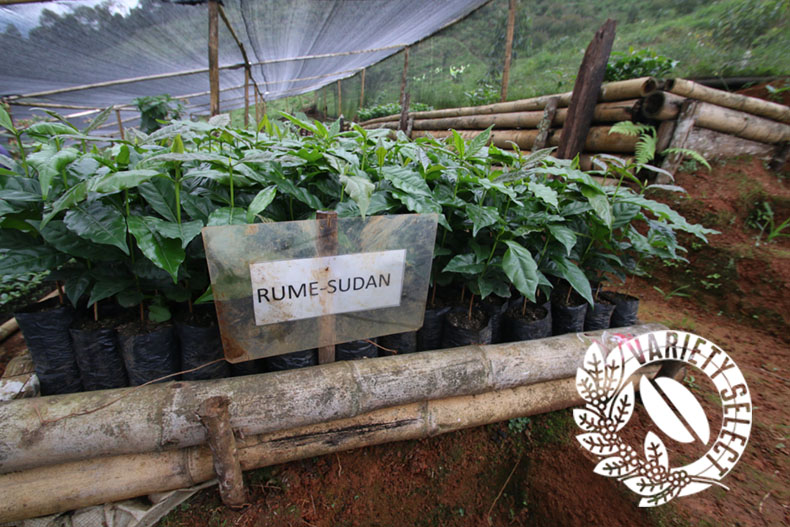 Rume Sudan RS-510 was selected from the wild population on the Bome Plateau, in the Rume Valley of south east Sudan. Predating the extraction of Typica and Bourbon genetic material, the Sudanese (and Ethiopian) accessions draw on a much broader genetic pool than their more strenuously selected nieces and nephews. Rume Sudan has long interested genetic and hybrid development researchers due to the broader genetic base and disease resistance it offers, and continues to appear in new hybrids today. Low yields and small bean size have limited Rume Sudan’s popularity with farmers, making it rare to find as a standalone variety. We’re excited to be offering this interesting look into coffee’s history… and it’s future.
Rume Sudan RS-510 was selected from the wild population on the Bome Plateau, in the Rume Valley of south east Sudan. Predating the extraction of Typica and Bourbon genetic material, the Sudanese (and Ethiopian) accessions draw on a much broader genetic pool than their more strenuously selected nieces and nephews. Rume Sudan has long interested genetic and hybrid development researchers due to the broader genetic base and disease resistance it offers, and continues to appear in new hybrids today. Low yields and small bean size have limited Rume Sudan’s popularity with farmers, making it rare to find as a standalone variety. We’re excited to be offering this interesting look into coffee’s history… and it’s future.
Geisha
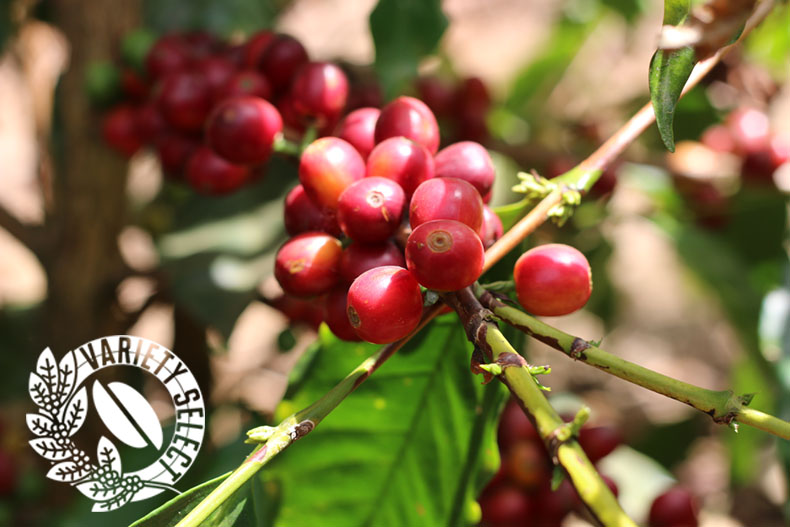 An Ethiopian descendent, Geisha had been trialed in Latin America since the mid 50’s by researches seeking new means of disease resistance. Shelved for poor cup quality and yield due to being grown at too low of altitudes, the Geisha variety did not come to prominence until Price Peterson won the Best of Panama contest with it in 2006. In the decade since, the Geisha variety has ascended to the ranks of coffee variety superstardom. Geisha coffee typically offers a very floral cup with loads of citrus acidity. While Central American Geishas are commonly described as tea-like, with a lighter body and moderate sugar levels, those grown in Colombia frequently have a heavier mouthfeel and sweeter cup.
An Ethiopian descendent, Geisha had been trialed in Latin America since the mid 50’s by researches seeking new means of disease resistance. Shelved for poor cup quality and yield due to being grown at too low of altitudes, the Geisha variety did not come to prominence until Price Peterson won the Best of Panama contest with it in 2006. In the decade since, the Geisha variety has ascended to the ranks of coffee variety superstardom. Geisha coffee typically offers a very floral cup with loads of citrus acidity. While Central American Geishas are commonly described as tea-like, with a lighter body and moderate sugar levels, those grown in Colombia frequently have a heavier mouthfeel and sweeter cup.
And check out these Beanologies of the Variety Select coffees we have coming:
-Andrew Miller